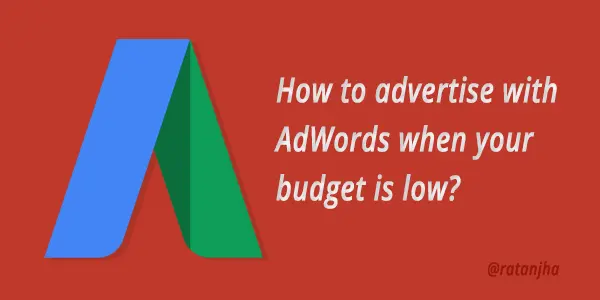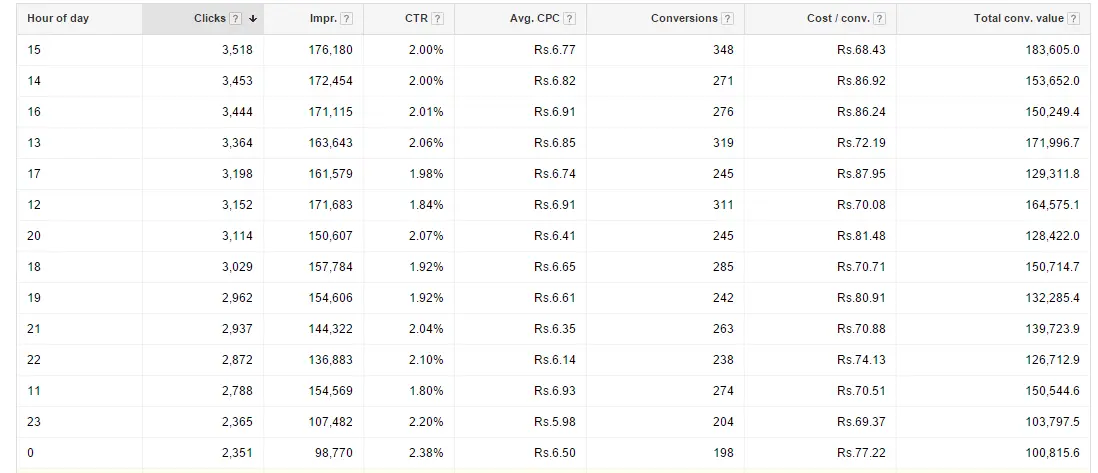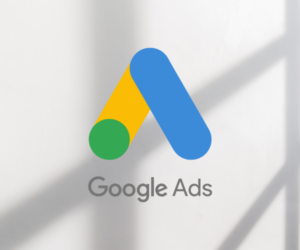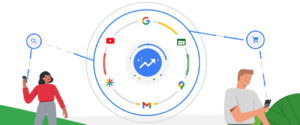When it comes to advertising with Google Ads (AdWords), there’s definitely no close alternatives. Let’s not get into the reasons. I am sure you know them all.
But, it becomes important to note that as more and more businesses are advertising with AdWords, it is making the competition stiffer. The keywords which cost pennies a few years ago are now costing elephants. Yes, it is not the same with every keyword or industry; still, you can’t deny a significant increase in the amounts you bid.
Thankfully, it does not end or minimise the scope of a positive Return On Investments. There are strategies which when deployed efficiently in place can ensure profitability for you.
What are these strategies? How to ensure your maximum Returns On Advertising Spends (ROAS) with Google Ads? Even when you are low on budgets?
Without much ado, let’s get into the detail…
Confine your targets
This is the first thing I advise individuals, start-ups and businesses which are on comparatively lower advertising budgets. Being on a low budget is not a problem at all. If you start small it does not mean you will stay small. If you have proper expansion and growth strategy in place, you can’t be deterred with your budget constraints.
Minimise the number of locations you would be targeting. Yes, it’s wise to confine your target geographies when you start small with AdWords. Practically, you can’t reach out to all your potential markets on a tight budget. Come on, you have to admit it. Let’s take an example –
If you are a travel operator, the whole world may be your potential targets – if not all countries, at least many of them. Now when your budget is smaller, your ads won’t show for long and the budgets will get exhausted within a few hours. Your ads will eventually stop even before you begin to be found by your potential customers.
Hence, it’s better to start with small geography – may be one main country or a few major cities of that country. It depends on how small your budget is.
Putting it simply, focus on smaller geography and earn some revenue so that your business can be self-sustainable and you can continue to advertise there. Aiming a bigger chunk of revenue from all over the world will only make a hole in your pocket without fetching you anything noticeable with Google Ads.
So, start with targeting a shorter area, and then expand. Yes, once things start falling in the right place and you start generating consistent revenue, you can expand any time.
Go with the best
No matter whether you sell a product or offer any service, you may have more than one thing to advertise. Especially in India, it’s a common practice to do a bit of everything. J
Hold your horses!
You can’t advertise everything on a smaller budget. If you do, you won’t stay longer in the competition and almost the same philosophy which I talked about in the previously applies here. Your budgets will get used before you begin to attract potential customers.
Hence, choose the product/service which you are best at.
Analyse your profit margins. If your best product does not fetch you much profit, analyze the potential of their sale. Can they be sold more often and/or in higher quantities? If yes, you can pick it to advertise. If not, move to the next product or service.
What I need you to find is a product/service that gives you enough margins to bear the cost of advertising efficiently. For instance, if the sale of a product priced at $40 gives you $10, you can spend $5, $6, or even $7 to sell it. Of course, do not take this as precise values or percentage. There are several other aspects that affect your actual costs and margins. But what I aim to clarify is – there’s no point selling it at an expense of $12 or even $10. Can you afford to do that?
The point is to choose the product/service which has got better selling potential and profit margins. Yes, when you are on a sufficient budget, one product may be covering for others, but you can still get desired profits on the whole.
It is not the case with smaller budgets. Here you need to be choosy because if you happen to choose a hard to sell or low-profit margin product, you will end up making a mess.
Change your budget strategy
Suppose, you have $600 to spend on advertising to start with. If this budget is smaller for the industry you are in and the target markets you have, do not advertise for the whole month. Yes, don’t be surprised. I will explain…
$600 for a month comes up to be $20 a day. Now if the average CPC is $2 you will get a maximum of 10 clicks for your ads. Taking a basic/average conversion rate at 5% you will get no conversion. Yes, you read it right, 0 conversions.
Now, let’s talk about real strategy. Instead of aiming the whole month to run your ads, run your ads for a lesser number of days. For instance, let’s analyze the results on 10 days.
If you run ads only for 10 days, your budget per day would be $60 and the average number of clicks you would get, based on the average CPC we discussed in the previous example, would be 30. Again, at the conversion rate of 5%, you will get 1 to 2 conversions per day.
Is that clear? While on a budget of $10 per day you would get no conversion even after days or say months, but in the second strategy you will get at least 10 to 15 conversions.
Yes, you have sensed it right. To reach an extent where you can aim real conversions, you need to stay in the completion for longer and get at least a certain number of relevant clicks. You can take it as a threshold. On a lower budget per day, you may be under this conversion threshold throughout the period, but accelerating it by minimizing the number of days, you get beyond that and stay in the competition for longer, and thus get conversions.
In the first example, going by the comparison shopping behaviour of users today, the same person might have clicked your different or the same ad twice. Thus, the number of people you are actually reaching out to is smaller. Again, if the same person who clicked your ad and visited the website in the morning comes to Google to do a similar search, you are not there, because your budget got exhausted. Now if he decides to buy at that moment, you will not get the sale, one of your competitors’ will. And you know what? May be your ads or website helped this customer make his final decision to buy.
Thus, if you wish to win, it is important to be in the completion. Do not worry if somebody came to the website and did not convert if you are in the competition throughout, all those not converted clicks will get covered up.
Someone who clicked yesterday may convert coming to the website through any other source. Someone who simply saw the ad and did not click may recall your brand name when he actually needs to purchase a product/service you sell. He may also recommend you to his friends and relatives. Where do these sales come from? Yes, through your AdWords campaigns.
Therefore, it’s important to be there and stay where your customers are. You have to be longer in the competition to win. And you can’t do it on a spend of tiny amounts every day for a year. Rather a fairly big amount for a few months or days will bring you the revenue you require to keep advertising and grow.
Start with Search Network only campaigns
Do you know what the biggest difference is between a search network only campaign and a display network only campaign?
It’s the users’ intent.
While on Display Network campaign the intent of users is vague, the users of Search Network are desperately looking for exactly what you sell and offer.
In short, showing your ads on Google’s search result page, you can be seen by highly relevant audiences. They need what you offer. You are not looking for them, they are looking to find what you sell. You only have to ensure that you are there and you are able to bring the competitive difference.
This is the reason when you are a smaller budget Search Network only Campaigns are fruitful in comparison with Display Network Campaigns.
Use Custom Ad scheduling
Do not run your ads round the clock when your AdWords budget is low. Go for custom scheduling. Based on the products or services you offer and the geographies you are targeting, there must be certain hours when your potential customers are not much active- for instance at night or early in the morning hours.
Scheduling your ads to run only for certain hours will give the system more budgets to use.
Suppose your $60 budget for the day was set to be distributed evenly over 24 hours, now if you schedule it to be used in 10 hours only, you will definitely be able to be more competitive. I am sure you know what being more competitive means, don’t you?
To sum up, I would say that being low on a budget is not a problem at all. Do not wait for the right time to come when you will have enough budgets to start with AdWords. Rather, get up and embrace the strategies which will help you bring the right time. It’s your time, make the most of it.
Thanks to the intelligent auction methodology of AdWords, it does not always go to the highest bidder. Otherwise, the story would have been different. According to the algorithms that AdWords works with, there are several aspects which decide the top or higher ad positions for an advertiser’s ad.
If you understand the present-day online users’ behaviours well and can align your advertising campaigns, landing pages, and the conversion funnel according to it, AdWords is waiting to help you grow.
All the best!
Have questions? Let them flow in the comments…
Sharing is caring!







3 thoughts on “Low Advertising budgets? Here’s how Google Ads can still work for you”
Hi Ratan,
I enjoyed reading your beautiful article. The old adage in marketing still holds right? That is less is more…..20% and 80% rule…targeting the area, timing and frequency plays such a crucial role..Thanks a lot..
Sundar
Hi Sundar,
Thanks! And yes, less is more definitely applies, at least with AdWords, when budget is the constraint.
Thanks
Ratan
Great article Ratan!
We are familiar with budget constraints and the challenges they present to PPC analysts. It’s where the core idea for our platform SteadyBudget came from actually:) I think some of our features could really help readers who have these challenges accurately spend their budgets and never overspend.
Thanks again,
Jon